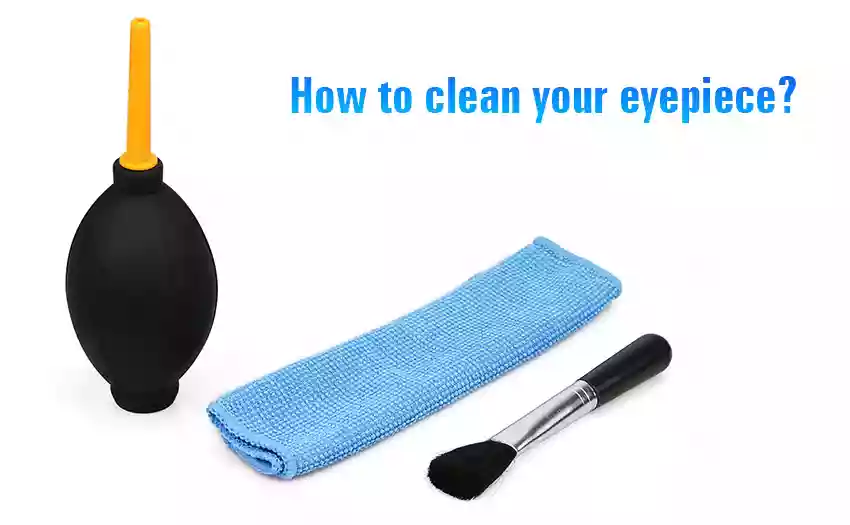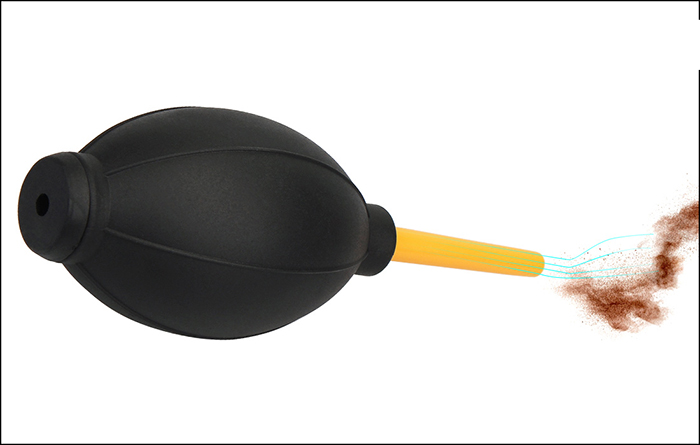Blog

How to clean your eyepiece, filter, scope or other optics product?
It can be really annoying when you finally set up your telescope and are ready to take the plunge, only to realize that all you see is a blur. Don't be in a hurry to suspect that something is wrong with your equipment, maybe your eyepiece or filter just needs a cleaning.
Let me remind you that it's really important to protect your optics from dust, fingerprints, or scratches. As we know, the lenses are basically coated, sometimes featured with fully multi-coating. If you try to wipe dust off your lenses, there may be a chance of damaging the coating, not to mention the scratches.
Why Cleaning Matters
Dust, fingerprints, and scratches can significantly affect the quality of your observations. Most lenses are coated, sometimes featuring fully multi-coating, which enhances performance. However, improper cleaning methods can damage these coatings or scratch the lens surface, leading to degraded image quality.
Essential Cleaning Tools
Here’s a list of items that will make your cleaning tasks easier and safer:
1. A squeeze bulb air blower
As the name suggests, just squeeze the bulb and the air will blow all the dust on the lens. And something also great about that is it has no touch to the lens so the lens will be perfectly cleaned without any potential damage to the coatings.

2. A microfiber cloth
Microfiber cloths don't scratch lens, it’s made to be non-abrasive and protects your lens at all times throughout the cleaning process. This is also why you do not use your shirttails, jacket sleeves, shirt sleeves, or other non-microfiber materials. Those alternatives will scratch your lens and make it harder to get a good image.
3. Lens brush
You can tilt the lens downside and brush slightly the surface of the lens so that the dust would fall to the ground.
4. Cotton swabs and cleaning alcohol
The body of the eyepiece, especially the grip part, could easily be stained by the oil on our skin and attract dirt, so you may also need to use the cotton swab dipped in cleaning alcohol to clean the body. The excellent touch will definitely improve the experience of your observation.
Good soldiers must know how to protect and take good care of their guns and take it as their responsibility. Like I said at first, the most important thing is to keep your gear away from the dirt, so I guess the best way to clean your eyepieces is to always remember to put on the dust cap when you finish using them.
Step-by-Step Cleaning Process
Follow these steps to effectively clean your telescope's eyepieces and filters:
-
1. Gather Your Cleaning Materials
-
Collect all the necessary items listed above before you start cleaning.
-
2. Gently Blow Away Dust
-
Use the air blower to remove any loose dust from the lens surface. Avoid blowing directly from your mouth to prevent saliva from contaminating the lens.
-
3. Use the Lens Brush
-
If any dust remains, use the lens brush to gently sweep it away without touching the lens.
-
4. Wipe with Microfiber Cloth
-
Lightly moisten a corner of the microfiber cloth with lens cleaning solution (if applicable) and wipe the lens in a circular motion. Be careful not to apply excessive pressure.
-
5. Clean the Eyepiece Body
-
Use a cotton swab dipped in cleaning alcohol to clean the body of the eyepiece, focusing on the grip area where skin oils tend to accumulate.
-
6. Check for Residues
-
After cleaning, inspect the lens under light. Ensure there are no streaks, stains, or leftover fibers.
-
7. Store Properly
-
Once you have cleaned your eyepieces and filters, always remember to put on the dust caps to protect them from dirt and dust when not in use.
Click to protect your lens: Lens Cleaning 3-piece Set
Conclusion
Just as a good soldier takes care of their equipment, so too should astronomers cherish their gear. Regular maintenance and proper cleaning techniques will ensure that your telescope, eyepieces, and filters provide the best possible views of the night sky. By following these simple steps, you can keep your optics in prime condition and ready for your next cosmic adventure.
For more tips on protecting your lenses, don’t hesitate to click here: Cleaning Resources. Happy stargazing!
Comments (2 )
Guest
My SV191 zoom eyepiece is hard to turn. You have yo work it about 15x fir it to loosen up. Is there anything I can do to get this loose. It's almost useless inless you work it ... even then it not an easy zoom. Please help?

Guest
purchased new eyepieces from Amazon. The15mm and 20mm are great however the 6mm and 9mm seem to have an oily substance on the inside also have black flecks the flecks don't bother me as much as the oily film is there a way to clean the inside of an eyepie